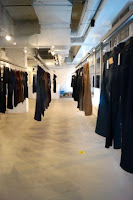Physical shops aren’t dead as yet and they shall never perish, with time they shall evolve. The pop-up shop is a current trend which mall owners or Landlords cannot afford to ignore in the Middle Eastern markets.
There is a saying that “Future belongs to those who embrace change with both open arms”.
My inspiration to write this article comes from my 5 years old son’s purchasing habits i.e. he immediately starts browsing for toy shops as soon as we enter any mall or shopping centre.
I once told him that Toys R Us worldwide is closing to which he immediately replied that he shall now start shopping from smaller toy shops or discount centres & closure of giant Toy retailer would not hamper his love for toys.
I once told him that Toys R Us worldwide is closing to which he immediately replied that he shall now start shopping from smaller toy shops or discount centres & closure of giant Toy retailer would not hamper his love for toys.
This reinstates my understanding that “It does not matter how big or good you are, you can always be replaced”. With the closure retail toy store giant, there is a huge opportunity for smaller toy brands or suppliers/manufacturers to enter and do things in more digital savvy manner.
Pop-up retailing is such a trend that provides a platform for such small entrepreneurs to try and test the market with their products or services prior to entering an unknown territory. It’s a $50 Billion segment in the USA alone.
As per Retailscope research in 2016, 52% of the people surveyed believe that pop-up stores are an effective way of discovering new brands. It is also a way for young brands to physically meet their customers and to activate word-of-mouth promotion.
Even luxury brand Louis Vuitton, for example, has just opened its first pop-up store in Italy, the aim being to rejuvenate its image and test new retail places, in order to explore new possibilities. This confirms the effectiveness of Pop-up stores in modern retailing.
Advantages of Pop-up shops are:-
- They create market buzz.
- Low risk as the overheads are limited.
- Helps in testing new retail environments.
- Help brands reach where their customers are.
- It provides extended reach to established brands for generating awareness and for introducing the idea of concept selling.
Advantages for Mall owners to encourage pop-up stores:
- Drives newness to the mall by short-term leasing of pop-up stores.
- Mall participation in encouraging entrepreneurs and first-time retailers to try out the physical retailing.
- Driving a cultural change by bringing & creating an ecosystem for nurturing startup pools. You never know, this first-time retailer might end up as one of your permanent tenants and result in the creation of multi-million dollar segment.
- Optimum utilization of vacant stores or spaces to generate some revenue as well as combine it with mall’s CSR initiatives.
Case study: “Tell a story”- trailer bookstore on the move.
Brand want to tell its customers more about journey of a book. “Tell a story” has a very simple concept: a bookstore in a van, driving around Portugal to promote national literature all over the country.
Purpose: Brand wanted to defeat language barriers and allow the world to catch a glimpse of the wonderful tales of the Portuguese literature which were missed out because nobody translated them in English.
In this van, roaming the streets of Portugal, tourists will discover Portuguese classics translated into English, French, German, Italian and Spanish. “Tell a story” envisions books as a living soul, not meant to be tucked away in a lonely corner, but rather enrich the mind of human beings.
Van “guests” can also buy pens and postcards to write their own stories.
Embracing technology: Van also features e-books and access to e-commerce sites wherein the customers can browse and download or place an order for the titles which are not available in the van.
I would be more than glad to discuss my learnings which I have acquired by closely following pop-up retailing with any of my retail fraternity member or entrepreneurs willing to enter into physical retailing in the Middle East market, thus helping my Retail sector to grow beyond boundaries.
I can be reached at riteshmohan@yahoo.com
Remember “For those who dare to dream, there is the whole new world to win”.
About the author:
Ritesh Mohan is a passionate retail professional with over 20 years in the Retail sector, handling some of the biggest brands in beauty, fashion and fragrances retail & FMCG sector. He has been instrumental in the growth of some of the regional brands as well in Middle East region. He specializes in Retail management, Product development and Brand management, Retail Operations, Sales Management and Franchising & Business Management. He strongly believes in empowering business owners with his wisdom & experience of around two decades in the industry.






